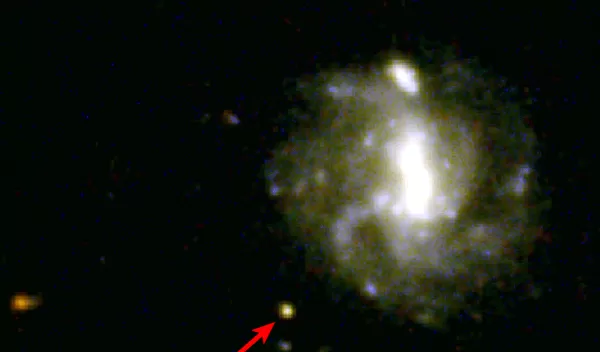
Astronomers find a golden glow from a distant stellar collision
An NSF-supported team of astronomers found new evidence of the occurrence of a kilonova -- a cosmic explosion that creates massive amounts of gold and platinum -- that went unnoticed during initial observations of a gamma-ray burst spotted in August 2016 but was confirmed after examination of data from the 2017 LIGO detection of gravitational waves.
The team, led by the University of Maryland's Eleonora Troja, reported their findings in Monthly Notices of the Royal Astronomical Society. A UMD press release also discussed the findings.
Kilonovae occur when two neutron stars merge creating a turbocharged explosion that instantly produces large quantities of heavy metals.
Troja and her colleagues made the discovery when they re-examined data from the gamma-ray burst and compared it with the first direct observation of a merger between two neutron stars made in August 2017 by LIGO, NSF's Laser-Interferometer Gravitational Wave Observatory.
Initially, Troja said, she and her colleagues were disappointed because the data didn't match expectations. "Then, a year later, the LIGO event happened. We looked at our old data with new eyes and realized we had indeed caught a kilonova in 2016."
The similarities between the two events suggest that the 2016 kilonova also resulted from the merger of two neutron stars. Kilonovae may also result from the merger of a black hole and neutron star, but it is unknown whether such an event would yield a different signature in X-ray, infrared, radio and optical light observations.
"With the onset of advanced gravitational wave detectors, only recently have astronomers begun to place direct constraints on these processes," said Hans Krimm in NSF's Division of Astronomical Sciences. "This is another great example of how these recent detections are opening a new era of astrophysics."


